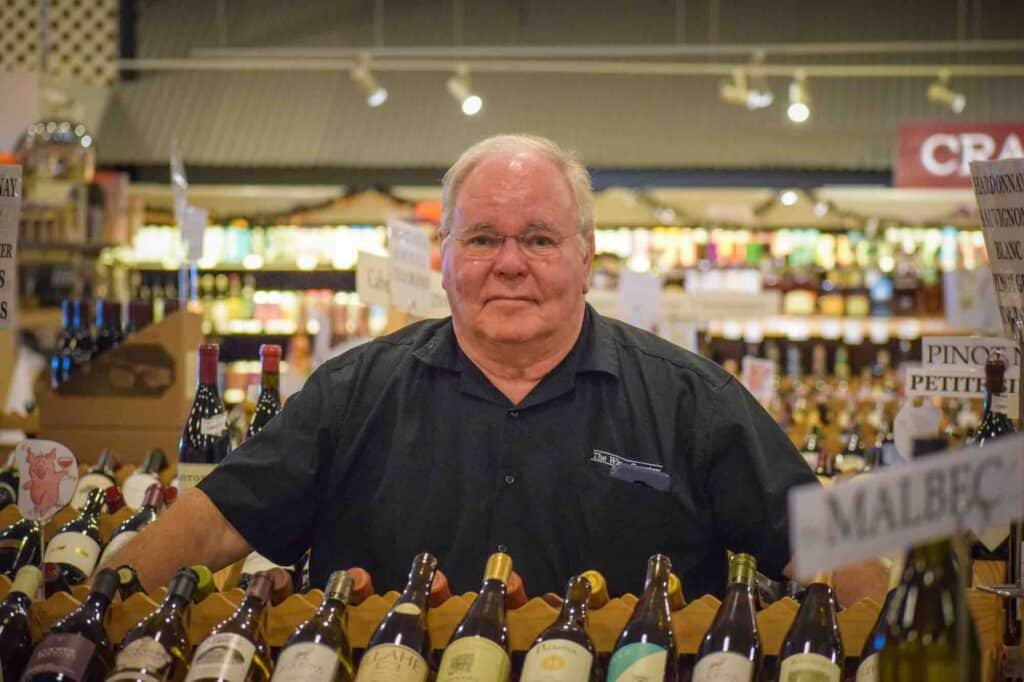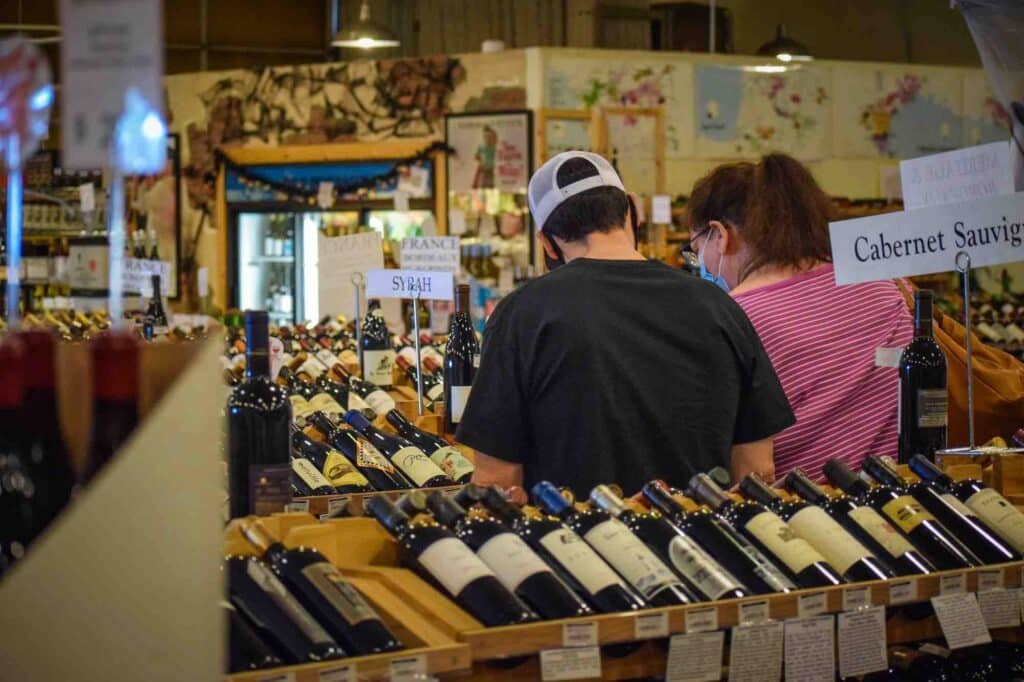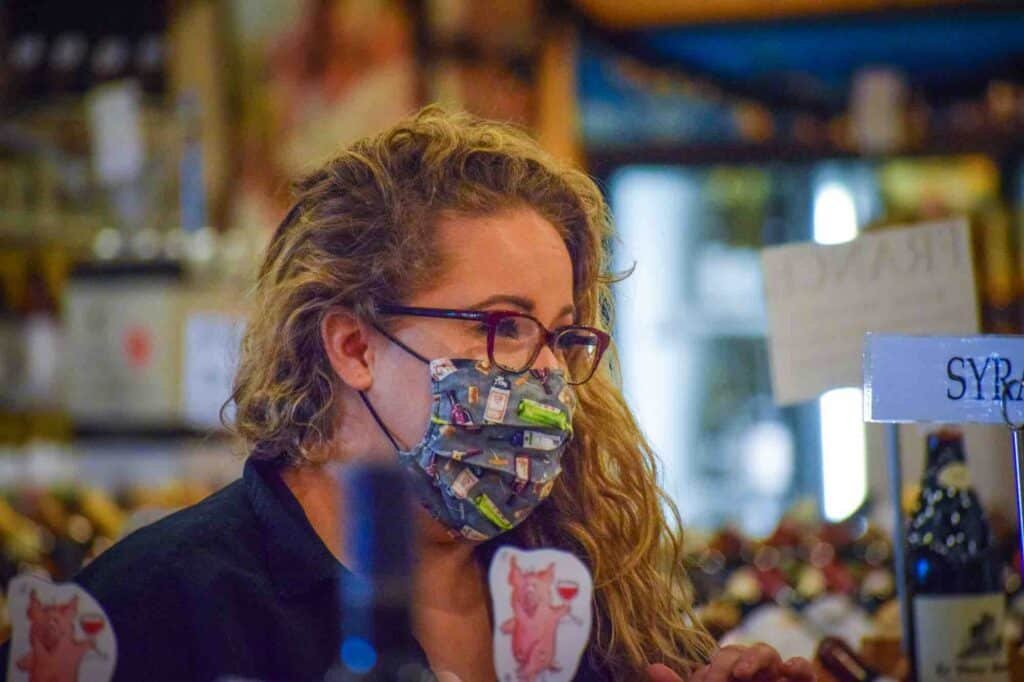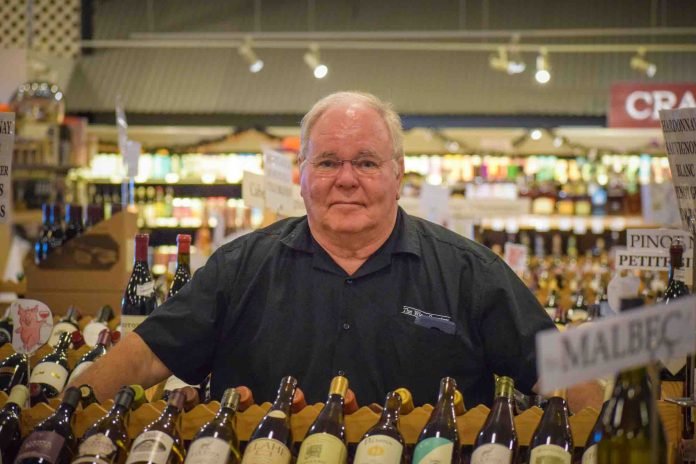In the 1970s, Long Beach native Randy Kemner had little idea that, while playing the piano for a glamorous crowd at an equally glamorous, ocean-view restaurant, that wine would eventually become the epicenter of his life. The Wine Country, Signal Hill’s goldmine of that ever addictive aged grape blood, wouldn’t open for nearly two more decades and, even more: Who the hell cared about wine in America?
After all, he was sitting at a piano right then and there, trying to make a career in music happen after studying composition at UCLA—and the fact that he was sitting at that very piano in a Dal Rae-like space could tell him little more than that.
Until the wine bottles hit the tables.

“I had never seen an actual wine bottle before,” Kemner said. “The parents of Baby Boomers did cocktails and little more—occassionally a really bad rosé at Easter that I never saw where it came from. It was just this pink glass of awfulness.”
Kemner postulates that this could very well be the reason his parents didn’t really touch wine: They were drinking awful versions of what they thought was bottled sophistication, suffering through it in the name of prestige—a misinformed cloud that shrouded the entirety of American wine culture up into the 1980s, just as the Napa-fication of America’s wine was beginning to flourish with brands like Mondavi and publications like Wine Spectator.
“Wine is so much more than prestige. I just hope one day at a time I can help shift that obsession with title and lean it toward the part I love: Using the great connector that is food to tie folks together—and yes, that includes wine.” -Randy Kemner, owner of The Wine Country
Each of these brought their very particularly American perspective to wine: Wine was about what was solely inside the bottle and it is suggested to drink it, well, just like that. Pour it into a glass and drink—what was essentially the polar opposite of European wine culture, where the traditions of food cannot be separated from the wine because wine was made for food itself.
“The looks of horror my European friends give me whenever I say it almost guaranteed that most diners in America will have a glass of wine before and after the food, never touching it while eating,” Kemner said. “We skipped over that and went straight to elite wines when the U.S. really started getting into wine—leaning on things like what Robert Parker would tell us to drink. They took us down a completely different path that has absolutely nothing to do with traditions. Instead, it was a sense of prestige and you were buying it for that prestige.”
And to a large extent, Kemner is spot on.
While wine pairings might seem common, most Americans only know of this when attending to a menu that is specifically designed with pairings (most likely set up by a chef and a consulting sommelier at a restaurant). The majority of Americans don’t pair wine with food; they pair it with, well, drinking.
The flurry of “wine can be tasty”—shucking the “glass of awfulness” Kemner alludes to in the period before American wineries really found their footing—soon took over the States in the 1980s. Part of that takeover was thanks to boxes of Franzia—filled with the cheap run-off of quickly crushed Zinfadel grapes that create an incredibly sweet concoction—which drove an entire subset of people who had never touched wine to explore. And like the parents of Baby Boomers and Boomers themselves, it was viewed like a cocktail: A pre- and post-eating operation.
And yes, to this day, you will often getting the chiding snide of a self-proclaimed sophisticate claiming no one who “truly loves wine” would ever touch the buffoonery that is white zin—much like coffee lovers tend to sneer toward Starbucks, using the learning curve of Americans’ cuisine education as a punchline. But make no mistake: The influx of boxed, sweet wines contributed to the growth of wine culture in the U.S., just as Starbucks can be largely be pointed to as the reason that most Americans know what a latte is.

“White zin really ushered in a new generation of wine drinkers,” Kemner said. “Following that came the sweet chardonnay trend and then the boom of the 90s, when I opened The Wine Country.”
Kemner’s knowledge—a wonderfully humanistic mix of curiosity, tenacity, and outright astuteness—is offered with a succinctness that is part of his charm: At one moment, you will be discussing how Germans were making some of the best sweet wine in the world but the international shift to drier wines in the 1990s made them question their own business model, ultimately failing to stick to what they do best. This would lead to a conversation about authenticity, including authenticity within one’s self as Kemner opens up about his earlier-but-ultimately-failed attempt at music. At another moment, Kemner would be breaking down the rosé explosion, talking about how his first rosé tasting had a mere 13 people attend to where current tastings could see well over a 100 (at least pre-COVID; they are holding back on tastings until safety is assured). This would lead to a conversation about what makes a Côtes-du-Rhône rosé so beautifully unique.
And the space of The Wine Country fits that knowledge: What was once just a place for wine is now a place for craft beer—Kemner even installed an entire refrigerated section to keep up with the boom in craft beer that overtook the 2010s, particularly here in SoCal—and an entire section of liquor and spirits that have come with the craft cocktail boom that has largely replaced Jack-and-Cokes at restaurants.
It is a space that simultaneously harnesses tradition while adapting to evolution. And with the expansion of his market space due to COVID—where beautifully lined packages of salumi and cheeses sit among rows of jams, crackers, pastas, and more—Kemner is doubling down on the hopes that Americans can begin to understand how wines can be made better with and for food; to tie the wine experience to more than just downing a glass of $150 Napa cab.

“I do best when I am doing what comes naturally—and wine comes naturally to me,” Kemner said with a sense of humility. “I love music but I knew there was no way I was going to make it happen because I wasn’t being authentic to myself.”
That sense of authenticity is key to Kemner’s operation: It is still ran entirely by family and friends, loyal members of Kemner’s tribe that oversee everything from food and gift baskets to new world wine to craft beer.
“My mom worked here, my little sister worked here,” said Samantha Dugan, Kemner’s second cousin. “My son was here before he went to Louisville for college and now he is back here again, heading the natural wines and spirits programs.”
That sense of connectivity is one of The Wine Country’s largest draws: There is usually not a month of the year you won’t find Kemner and his crew helping out with a philanthropic event—Kemner designs the wine menu every year for the Long Beach Library Foundation’s annual gala—or donating some Prosecco to nonprofit farmers’ dinner—like the 11th Annual Long Beach Farm Dinner that occurred this month.
“I cherish him,” Dugan said. “And not just because we are related but for how sweet and generous and amazingly knowledgeable he is. Even more, he shares that with the world.”
And sure, Kemner might still have to shout from the rooftops that we should have a wine steeped in food traditions, that wines should be something that is viewed beyond that of prestige and eliteness. It is a battle he has been facing for nearly 30 years and will continue to put armor on for.
“I still can’t tell you how many Americans come in and, in one way or another, basically saying they won’t touch anything under $100. And for me, it’s baffling: So you’re never going to touch a bottle of Beaujolais? Never drink a sip of moscato? You won’t be drinking Sancerre?” Kemner said. “Wine is so much more than that. I just hope one day at a time I can help shift that obsession with title and lean it toward the part I love: Using the great connector that is food to tie folks together—and yes, that includes wine.”
I only have one question, Randy: Do you need me to set the table?
The Wine Country is located at 2301 Redondo Ave. in Signal Hill



